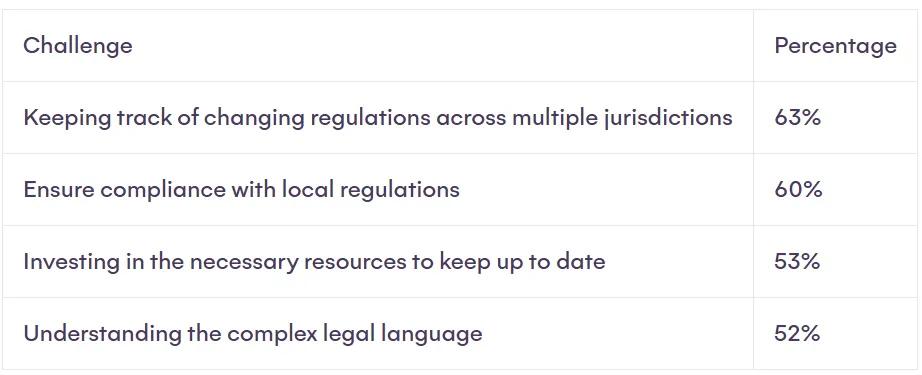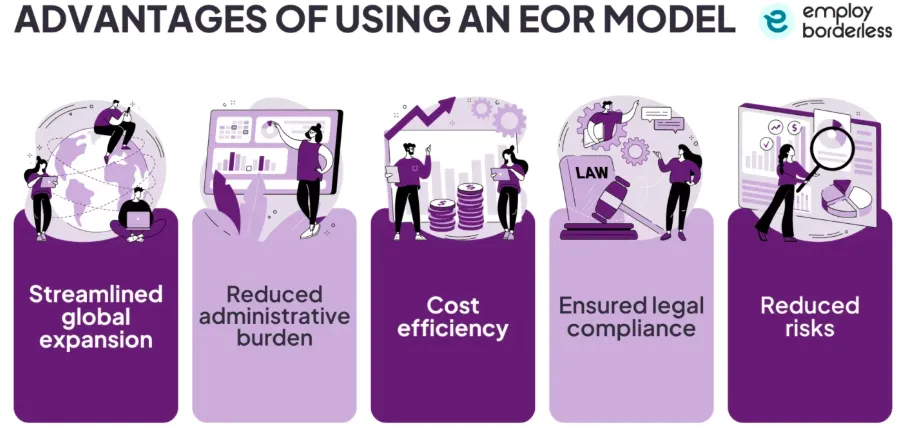How Smart Teams Hire Without Border Headaches?
![]()
In 2025, hiring across borders has become more than a trend, it's practically a necessity. With 28% of the global workforce now operating remotely and 16% of companies fully remote, the traditional office is no longer the default. This shift has expanded the talent pool, allowing companies to find the right fit regardless of location.
However, international hiring hides a different set of problems. Navigating diverse labor laws, cultural differences, and market trends can be a hassle when looking for the right person for the job. For instance, 69% of employers report difficulties in finding qualified candidates for open positions.
In this article, we'll explore practical strategies to address such challenges, helping you build a global team without the usual headaches.
Hiring Internationally: What’s Slowing You Down?
For American employers, the demand for international talent remains high. A 2023 survey found that 87% of U.S. companies were actively recruiting foreign nationals, with 71% increasing their efforts compared to the previous year. However, the U.S. immigration system poses significant challenges, with 83% of employers citing it as a major obstacle to effective hiring and retention strategies. These pitfalls often lead companies to consider alternative approaches, such as relocating foreign employees overseas.
Hence, legal complexities are one of the biggest hurdles when hiring internationally. Each country has its own rules regarding contracts, compliance, and benefits, making it essential to understand local labor laws. 63% of HR decision-makers face challenges in ensuring compliance with local regulations across multiple jurisdictions.

Source: Atlas HXM
Beyond legalities, differences in hiring practices and expectations can create confusion. For example, while one country may prioritize formal qualifications, another might focus more on practical experience or personal referrals. In regions like Asia, personal relationships and networking, often referred to as "guanxi" in China, play a larger role in hiring decisions, requiring a different approach compared to Western markets. Similarly, in Japan, consensus-building and group harmony are valued, and hiring decisions often reflect these priorities.

Source: Hyre Search
Therefore, a lack of regional knowledge can make it difficult to identify the best candidates or accurately assess their fit within your organization. In fact, 82% of respondents from the UK, Ireland, and the Netherlands have reported experiencing a bad hire, with over a third having multiple such incidents. These poor hires often impact productivity, morale, and customer satisfaction, underscoring the importance of local insight if you want to build a cohesive team.
Using the Right Hiring Model for the Market
Choosing between direct employment and partnering with local entities hinges on your company's long-term objectives and familiarity with the target market. Establishing a local entity allows for direct control over hiring and operations but involves navigating complex legal frameworks, which can get convoluted.
For instance, setting up a branch in Germany requires compliance with stringent labor laws and can take several months to complete. Still, collaborating with local partners or agencies can expedite market entry and provide valuable insights into local hiring practices, reducing the risk of non-compliance.
Employing an Employer of Record (EOR) is a strategic alternative for firms looking to expand without establishing a legal entity in the host country. When you use an EOR such as Multiplier or Remote, they assume responsibility for legal and administrative employment tasks like payroll, taxes, benefits, and compliance with local labor laws, allowing the client company to oversee daily activities. This model is particularly beneficial in countries like Brazil, where labor laws are complex, and setting up a local entity can be both time-consuming and expensive.

Source: Employ Borderless
Yet, deciding when to build in-house capabilities versus outsourcing depends on the scale and permanence of your operations in a given market. For long-term commitments with substantial hiring needs, investing in in-house HR infrastructure may be justified. However, for short-term projects or initial market entry, outsourcing through EORs or local recruitment alliances can provide flexibility and reduce overhead costs.
Conclusion
Smart teams don’t rush global hiring, they adapt to each market. So, make sure you choose the right hiring model, and stay ahead of legal and cultural roadblocks. With the right mix of local insight and strategic partnerships, you can expand faster without sacrificing quality or compliance. Hiring internationally doesn’t have to be slow or costly, it just has to be done right.